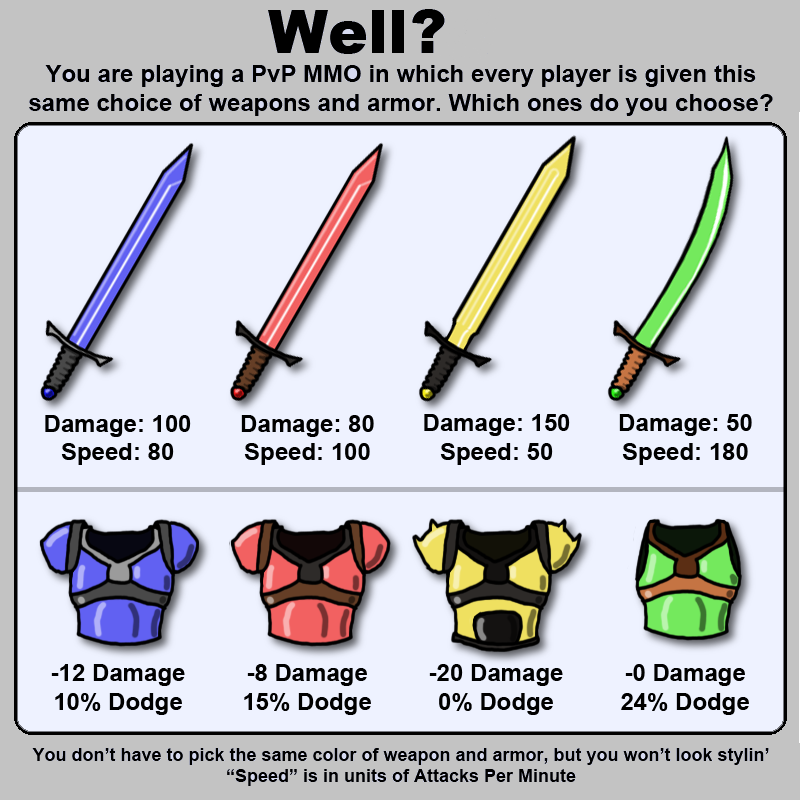Note: this image does not belong to me; I found it on 4chan. It presents an interesting exercise, though, so I'm posting it here for the enjoyment of the Less Wrong community.

For the sake of this thought experiment, assume that all characters have the same amount of HP, which is sufficiently large that random effects can be treated as being equal to their expected values. There are no NPC monsters, critical hits, or other mechanics; gameplay consists of two PCs getting into a duel, and fighting until one or the other loses. The winner is fully healed afterwards.
Which sword and armor combination do you choose, and why?
This post is incorrect. You do need to consider the individual matchups, not the average damage taken and given. My suggestion loses 2-3.
I understand the same-color bonus, but it seems to break the results when you set the stylin bonus to 0. For each (blue, yellow, green) sword, I get the damage against (blue,red,yellow,green) armor to be:
For a sword distribution of (.4,.2,.4) and an armor distribution of (.4, 0, .4, .2) , I get expected values for swords of (6272, 6200, 5904) and for armors of (6102,6143,6020,6308).
That's not an equilibrium, is it? Against that population, why would I not pick the Blue Sword with the Yellow Armor, for an expected payoff of (6272,6020)?